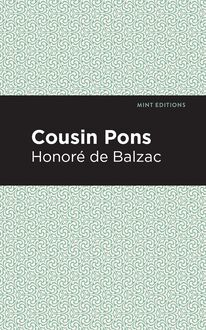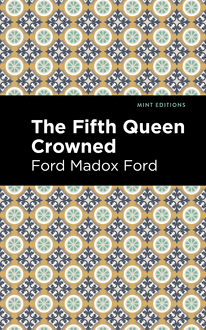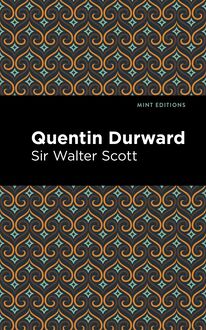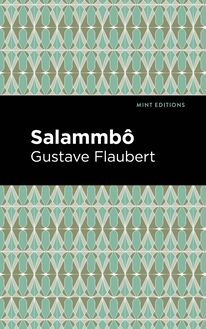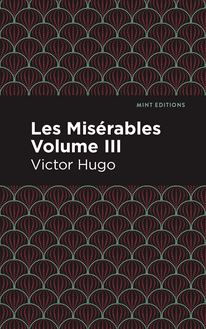-
 Univers
Univers
-
 Ebooks
Ebooks
-
 Livres audio
Livres audio
-
 Presse
Presse
-
 Podcasts
Podcasts
-
 BD
BD
-
 Documents
Documents
-
- Cours
- Révisions
- Ressources pédagogiques
- Sciences de l’éducation
- Manuels scolaires
- Langues
- Travaux de classe
- Annales de BEP
- Etudes supérieures
- Maternelle et primaire
- Fiches de lecture
- Orientation scolaire
- Méthodologie
- Corrigés de devoir
- Annales d’examens et concours
- Annales du bac
- Annales du brevet
- Rapports de stage
La lecture à portée de main
Vous pourrez modifier la taille du texte de cet ouvrage
Découvre YouScribe en t'inscrivant gratuitement
Je m'inscrisDécouvre YouScribe en t'inscrivant gratuitement
Je m'inscrisEn savoir plus
Vous pourrez modifier la taille du texte de cet ouvrage
En savoir plus

Description
Romola is a brilliant young woman who unknowingly falls in love with a handsome stranger whose true nature is fueled by greed, status and ego. Over the course of the novel, she uncovers his many transgressions and secret dealings.
A handsome stranger called Tito Melema arrives in Florence and is immediately smitten by Romola—the daughter of a local scholar. The two eventually marry as Tito gains access to various social circles. He becomes an influential figure who’s eager to gain more status and approval. His selfish desires come at the detriment of his loved ones including Romola and his adoptive father. As Florence erupts into political warfare, Tito’s need for self-preservation comes at an unexpected cost.
Romola is a period drama that was originally released from 1862-1863 as a fourteen-part series in Cornhill Magazine. The scope of Eliot’s storytelling incorporates critical historical events alongside a fictional family conflict. It’s a complex story that pushes the limits of compassion and understanding during a dire circumstance.
With an eye-catching new cover, and professionally typeset manuscript, this edition of Romola is both modern and readable.
Sujets
Informations
| Publié par | Mint Editions |
| Date de parution | 26 janvier 2021 |
| Nombre de lectures | 2 |
| EAN13 | 9781513275413 |
| Langue | English |
| Poids de l'ouvrage | 2 Mo |
Informations légales : prix de location à la page 0,0600€. Cette information est donnée uniquement à titre indicatif conformément à la législation en vigueur.
Extrait
Romola
George Eliot
Romola was first published in 1863.
This edition published by Mint Editions 2021.
ISBN 9781513270418 | E-ISBN 9781513275413
Published by Mint Editions®
minteditionbooks.com
Publishing Director: Jennifer Newens
Design & Production: Rachel Lopez Metzger
Typesetting: Westchester Publishing Services
C ONTENTS P REFACE P ART 1 1. T HE S HIPWRECKED S TRANGER 2. B REAKFAST FOR L OVE 3. T HE B ARBER ’ S S HOP 4. F IRST I MPRESSIONS 5. T HE B LIND S CHOLAR AND HIS D AUGHTER 6. D AWNING H OPES 7. A L EARNED S QUABBLE 8. A F ACE IN THE C ROWD 9. A M AN ’ S R ANSOM 10. U NDER THE P LANE -T REE 11. T ITO ’ S D ILEMMA 12. T HE P RIZE IS N EARLY G RASPED 13. T HE S HADOW OF N EMESIS 14. T HE P EASANTS ’ F AIR 15. T HE D YING M ESSAGE 16. A F LORENTINE J OKE 17. U NDER THE L OGGIA 18. T HE P ORTRAIT 19. T HE O LD M AN ’ S H OPE 20. T HE D AY OF THE B ETROTHAL P ART 2 21. F LORENCE E XPECTS A G UEST 22. T HE P RISONERS 23. A FTER -T HOUGHTS 24. I NSIDE THE D UOMO 25. O UTSIDE THE D UOMO 26. T HE G ARMENT OF F EAR 27. T HE Y OUNG W IFE 28. A P AINTED R ECORD 29. A M OMENT OF T RIUMPH 30. T HE A VENGER ’ S S ECRET 31. F RUIT IS S EED 32. A R EVELATION 33. B ALDASSARRE MAKES AN A CQUAINTANCE 34. N O P LACE FOR R EPENTANCE 35. W HAT F LORENCE WAS T HINKING OF 36. A RIADNE D ISCROWNS H ERSELF 37. T HE T ABERNACLE U NLOCKED 38. T HE B LACK M ARKS B ECOME M AGICAL 39. A S UPPER IN THE R UCELLAI G ARDENS 40. A N A RRESTING V OICE 41. C OMING B ACK P ART 3 42. R OMOLA IN HER P LACE 43. T HE U NSEEN M ADONNA 44. T HE V ISIBLE M ADONNA 45. A T THE B ARBER ’ S S HOP 46. B Y A S TREET L AMP 47. C HECK 48. C OUNTER -C HECK 49. T HE P YRAMID OF V ANITIES 50. T ESSA A BROAD AND AT H OME 51. M ONNA B RIGIDA ’ S C ONVERSION 52. A P ROPHETESS 53. O N S AN M INIATO 54. T HE E VENING AND THE M ORNING 55. W AITING 56. T HE O THER W IFE 57. W HY T ITO WAS S AFE 58. A F INAL U NDERSTANDING 59. P LEADING 60. T HE S CAFFOLD 61. D RIFTING A WAY 62. T HE B ENEDICTION 63. R IPENING S CHEMES 64. T HE P ROPHET IN HIS C ELL 65. T HE T RIAL BY F IRE 66. A M ASQUE OF THE F URIES 67. W AITING BY THE R IVER 68. R OMOLA ’ S W AKING 69. H OMEWARD 70. M EETING A GAIN 71. T HE C ONFESSION 72. T HE L AST S ILENCE E PILOGUE
P REFACE
M ore than three centuries and a half ago, in the mid spring-time of 1492, we are sure that the angel of the dawn, as he travelled with broad slow wing from the Levant to the Pillars of Hercules, and from the summits of the Caucasus across all the snowy Alpine ridges to the dark nakedness of the Western isles, saw nearly the same outline of firm land and unstable sea—saw the same great mountain shadows on the same valleys as he has seen to-day—saw olive mounts, and pine forests, and the broad plains green with young corn or rain-freshened grass—saw the domes and spires of cities rising by the river-sides or mingled with the sedge-like masts on the many-curved sea-coast, in the same spots where they rise to-day. And as the faint light of his course pierced into the dwellings of men, it fell, as now, on the rosy warmth of nestling children; on the haggard waking of sorrow and sickness; on the hasty uprising of the hard-handed labourer; and on the late sleep of the night-student, who had been questioning the stars or the sages, or his own soul, for that hidden knowledge which would break through the barrier of man’s brief life, and show its dark path, that seemed to bend no whither, to be an arc in an immeasurable circle of light and glory. The great river-courses which have shaped the lives of men have hardly changed; and those other streams, the life-currents that ebb and flow in human hearts, pulsate to the same great needs, the same great loves and terrors. As our thought follows close in the slow wake of the dawn, we are impressed with the broad sameness of the human lot, which never alters in the main headings of its history—hunger and labour, seed-time and harvest, love and death.
Even if, instead of following the dim daybreak, our imagination pauses on a certain historical spot and awaits the fuller morning, we may see a world-famous city, which has hardly changed its outline since the days of Columbus, seeming to stand as an almost unviolated symbol, amidst the flux of human things, to remind us that we still resemble the men of the past more than we differ from them, as the great mechanical principles on which those domes and towers were raised must make a likeness in human building that will be broader and deeper than all possible change. And doubtless, if the spirit of a Florentine citizen, whose eyes were closed for the last time while Columbus was still waiting and arguing for the three poor vessels with which he was to set sail from the port of Palos, could return from the shades and pause where our thought is pausing, he would believe that there must still be fellowship and understanding for him among the inheritors of his birthplace.
Let us suppose that such a Shade has been permitted to revisit the glimpses of the golden morning, and is standing once more on the famous hill of San Miniato, which overlooks Florence from the south.
The Spirit is clothed in his habit as he lived: the folds of his well-lined black silk garment or lucco hang in grave unbroken lines from neck to ankle; his plain cloth cap, with its becchetto , or long hanging strip of drapery, to serve as a scarf in case of need, surmounts a penetrating face, not, perhaps, very handsome, but with a firm, well-cut mouth, kept distinctly human by a close-shaven lip and chin. It is a face charged with memories of a keen and various life passed below there on the banks of the gleaming river; and as he looks at the scene before him, the sense of familiarity is so much stronger than the perception of change, that he thinks it might be possible to descend once more amongst the streets, and take up that busy life where he left it. For it is not only the mountains and the westward-bending river that he recognises; not only the dark sides of Mount Morello opposite to him, and the long valley of the Arno that seems to stretch its grey low-tufted luxuriance to the far-off ridges of Carrara; and the steep height of Fiesole, with its crown of monastic walls and cypresses; and all the green and grey slopes sprinkled with villas which he can name as he looks at them. He sees other familiar objects much closer to his daily walks. For though he misses the seventy or more towers that once surmounted the walls, and encircled the city as with a regal diadem, his eyes will not dwell on that blank; they are drawn irresistibly to the unique tower springing, like a tall flower-stem drawn towards the sun, from the square turreted mass of the Old Palace in the very heart of the city—the tower that looks none the worse for the four centuries that have passed since he used to walk under it. The great dome, too, greatest in the world, which, in his early boyhood, had been only a daring thought in the mind of a small, quick-eyed man—there it raises its large curves still, eclipsing the hills. And the well-known bell-towers—Giotto’s, with its distant hint of rich colour, and the graceful-spired Badia, and the rest—he looked at them all from the shoulder of his nurse.
“Surely,” he thinks, “Florence can still ring her bells with the solemn hammer-sound that used to beat on the hearts of her citizens and strike out the fire there. And here, on the right, stands the long dark mass of Santa Croce, where we buried our famous dead, laying the laurel on their cold brows and fanning them with the breath of praise and of banners. But Santa Croce had no spire then: we Florentines were too full of great building projects to carry them all out in stone and marble; we had our frescoes and our shrines to pay for, not to speak of rapacious condottieri, bribed royalty, and purchased territories, and our facades and spires must needs wait. But what architect can the Frati Minori [the Franciscans] have employed to build that spire for them? If it had been built in my day, Filippo Brunelleschi or Michelozzo would have devised something of another fashion than that—something worthy to crown the church of Arnolfo.”
At this the Spirit, with a sigh, lets his eyes travel on to the city walls, and now he dwells on the change there with wonder at these modern times. Why have five out of the eleven convenient gates been closed? And why, above all, should the towers have been levelled that were once a glory and defence? Is the world become so peaceful, then, and do Florentines dwell in such harmony, that there are no longer conspiracies to bring ambitious exiles home again with armed bands at their back? These are difficult questions: it is easier and pleasanter to recognise the old than to account for the new. And there flows Arno, with its bridges just where they used to be—the Ponte Vecchio, least like other bridges in the world, laden with the same quaint shops where our Spirit remembers lingering a little on his way perhaps to look at the progress of that great palace which Messer Luca Pitti had set a-building with huge stones got from the Hill of Bogoli [now Boboli] close behind, or perhaps to transact a little business with the cloth-dressers in Oltrarno. The exorbitant line of the Pitti roof is hidden from San Miniato; but the yearning of the old Florentine is not to see Messer Luca’s too ambitious palace which he built unto himself; it is to be down among those narrow streets and busy humming Piazze where he inherited the eager life of his fathers. Is not the anxious voting with black and white beans still going on down there? Who are the Priori in these months, eating soberly—regulated official dinners in the Palazzo Vecchio, with removes of tripe and boiled partridges, seasoned by practical jokes against the ill-fated butt among those potent signors? Are not the significant banners still hung from the windows—still distributed with decent p
-
 Univers
Univers
-
 Ebooks
Ebooks
-
 Livres audio
Livres audio
-
 Presse
Presse
-
 Podcasts
Podcasts
-
 BD
BD
-
 Documents
Documents
-
Jeunesse
-
Littérature
-
Ressources professionnelles
-
Santé et bien-être
-
Savoirs
-
Education
-
Loisirs et hobbies
-
Art, musique et cinéma
-
Actualité et débat de société
-
Jeunesse
-
Littérature
-
Ressources professionnelles
-
Santé et bien-être
-
Savoirs
-
Education
-
Loisirs et hobbies
-
Art, musique et cinéma
-
Actualité et débat de société
-
Actualités
-
Lifestyle
-
Presse jeunesse
-
Presse professionnelle
-
Pratique
-
Presse sportive
-
Presse internationale
-
Culture & Médias
-
Action et Aventures
-
Science-fiction et Fantasy
-
Société
-
Jeunesse
-
Littérature
-
Ressources professionnelles
-
Santé et bien-être
-
Savoirs
-
Education
-
Loisirs et hobbies
-
Art, musique et cinéma
-
Actualité et débat de société
- Cours
- Révisions
- Ressources pédagogiques
- Sciences de l’éducation
- Manuels scolaires
- Langues
- Travaux de classe
- Annales de BEP
- Etudes supérieures
- Maternelle et primaire
- Fiches de lecture
- Orientation scolaire
- Méthodologie
- Corrigés de devoir
- Annales d’examens et concours
- Annales du bac
- Annales du brevet
- Rapports de stage
